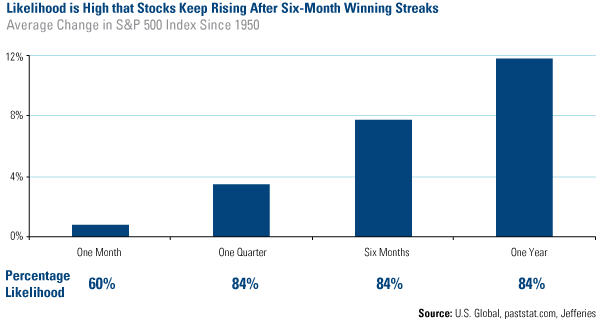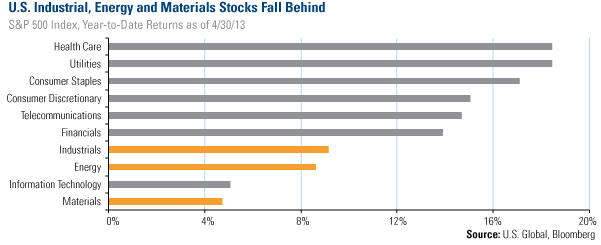Don’t sell in May
During the first week of May every year, the maxim, “Sell in May and Go Away,” gets taken out, dusted off and powered up as a reason to sell stocks. The rhyme is more than just a catchy urban legend: June, July, August and September have historically been the weakest months of the year for the S&P 500 Index.
Yet even if seasons trigger certain events, when the snow falls in Minnesota in May, Midwesterners need to throw on their winter gear and roll out snowblowers, not lawnmowers.
Consider this encouraging research: The S&P 500 has been rallying for six months in a row, which has happened 48 times since 1950. Following these six-month winning streaks, stocks have historically continued rising. Sixty percent of the time, the S&P 500 climbed 0.79 percent over the next month; 84 percent of the time, stocks increased 3.50 percent, 7.77 percent and 11.77 percent the next three, six and 12 months following the streak.
In addition, 165,000 jobs were added to payrolls in April, helping the unemployment rate fall to 7.5 percent. This is the lowest level since December 2008.
The news comes days after the Federal Reserve stamped its approval on another month of bond buying, with the added bonus of Ben Bernanke stating that the Fed is “prepared to increase or reduce the pace of its purchases to maintain appropriate policy accommodation.”
If that’s not enough to validate a continuing bull market, consider the European Central Bank’s exceptional move this week. Mario Draghi cut key interest rates to 0.5 percent, the first time in 10 months, following weaker manufacturing data out of top four largest economies in the eurozone. Germany, France, Italy and Spain all experienced manufacturing contractions.
Our portfolio manager of the Emerging Europe Fund, Tim Steinle, described the ECB’s motivation this way: It’s one thing to punish the periphery; it’s another to weaken the core.
The S&P 500 has climbed an amazing 12.74 percent through April 30, so if you’re eager to do some investment spring cleaning, you might want to consider areas that have underperformed. For example, take a look at the year-to-date returns by sector, which reveal an interesting pattern. Health care, utilities, consumer staples and consumer discretionary have all climbed more than 15 percent, much more than the market. Meanwhile, companies in the materials, energy and industrials sectors have lagged the overall index.
In recent days, an inflection point seems to have occurred, with these weaker areas of the market gaining strength. We wrote in the Investor Alert last week that cyclical stocks, including health care, consumer staples, utilities and telecommunication, have been lagging the remaining sectors. From the beginning of the earnings season on April 24 through May 3, energy, industrial and materials stocks are nearly the best performing areas of the market.
We believe expectations might have become too lofty for defensive companies and too gloomy for cyclical stocks, so as perceptions toward global growth improve, it won’t take much for energy, industrials and materials to take off.
More News
{{ commodity.name }}
{{ post.title }}
{{ post.date }}






Comments